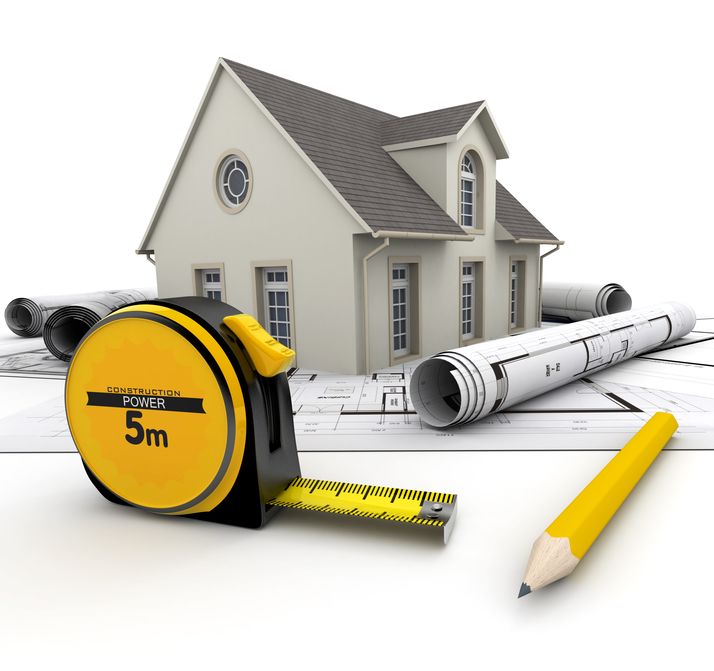
Many a property developer has spotted the potential of buying a large property and converting it into flats in order to maximise profit, and landlords can do this with their properties too.
A landlord may decide to convert a property into flats to maximise both rental income in the short term and profit on sale in the longer term. As is often the case, tax implications will vary depending on the circumstances.
Scenario #1
A property developer buys up a large house in a poor state of repair for £400,000. He spends a further £200,000 converting into four flats. The work takes six months. Once complete, the flats are sold for £250,000 each.
In this example, the motive is to make a profit rather than to buy the property as an investment. Any profit on sale is charged to income tax as a trading profit rather than to capital gains tax. The trading profit would be computed according to normal rules and the profit on this development (£400,000) would be taken into account in computing the developer’s trading profits for the period in question.
As the developer is trading, capital gains tax (CGT) is not applied. Consequently, there is no CGT to pay when the flats are sold.
Scenario #2
A landlord has a number of properties that he lets out. One of these properties is a large house which has been let out to a family for a number of years. He decides to convert the property into flats. He then lets the flats for a further couple of years before selling them.
The landlord will be subject to CGT on any gain made from the sale of the flats. This is because the flats have always been let and have never been the landlord’s main residence, neither private residence relief or letting relief are applicable.
The landlord originally bought the house in question in 2005 for £300,000 and let it as a single unit until June 2009, when he converted the property into three flats. The conversion costs were £150,000. Each flat has two bedrooms and is approximately the same size.
The work was completed in November 2009 and the flats were again let until January 2011, when they were put on the market. Flat 1 sold in February 2011 for £220,000, Flat 2 also sold in February 2011 but for £230,000, and Flat 3 sold in March 2011 for £215,000. In each case the costs of sale are £2,000.
The gains on the sale of flat 1 are calculated as such:
Flat 1
| Proceeds | £220,000 | |
| Less: cost of original property (1/3 x £300,000) | £100,000 | |
| Conversion costs (1/3 x £150,000) | £50,000 | |
| (£150,000) | ||
| £70,000 | ||
| Less: costs of disposal | (£2,000) | |
| Gain on sale | £68,000 |
The total gains on the sale of all the flats amounts to £209,000 and will be taken into account in computing the landlord’s net chargeable gains for 2010/11 and charged to CGT at the appropriate rate.
Scenario #3
After his children have moved out, a homeowner decides to convert his property into flats prior to sale to maximise the profit on sale. The flats are sold as soon as the work is complete. The property was purchased in 1990 for £100,000 and was the homeowners main residence until June 2010, at which time work began to convert the property into three flats.
The conversion work took 6 months and was completed in November 2010 costing £180,000. The flats were then sold in January 2011 for £275,000 each.
By carrying out this work on the property, the homeowner seeks to gain a higher profit from the sale. However, the gain made on the property will not qualify for private residence relief. To avoid being charged CGT on the whole sale, it is necessary to obtain a valuation of the house assuming the work had not been carried out and it was sold as a single dwelling. In theory, this is how to establish the additional profit attributable to the conversion work. The valuation figure is then eligible for private residence relief and only the gain on this will be charged CGT.
In the above example, if the property been sold as the original family home it would have fetched £600,000. By converting it into flats, the sale proceeds increased to £825,000 (3 x £275,000). The cost attributable to the additional proceeds of £225,000 (i.e. £825,000 – £600,000) was the conversion expenditure of £180,000. This expenditure effectively generated an additional gain of £45,000 (£225,000 – £180,000). Therefore, the development gain of £45,000 does not qualify for private residence relief.
Scenario #4
A homeowner decides that her house is too big for her. She converts it into two flats, one of which she sells. She continues to live in the remaining flat.
The property was purchased in 2000 for £325,000. In May 2010, the property was fully converted into two flats. One flat was sold in June 2010 for £275,000. The conversion costs were £40,000. At that date, the value of the unconverted house was £500,000 and the value of the flat the homeowner lived in was £350,000.
The combined value of the two flats at the date the flat was sold was £625,000. This is £125,000 more than the value of the unconverted property at that date. The conversion costs are £40,000, making the gain attributable to conversion a total of £85,000.
Now that the property is two dwellings, the gain is not wholly covered by the private residence exemption and must be split accordingly between the flats to determine how much gain applies to each. This gain attributed to the first flat is then taken into account when selling it.
The allocation of gain is calculated by taking into account the relative values of the flats (on the date the first flat was sold).
The non-exempt gain attributable to the flat sold is therefore: £275,000/£625,000 x £85,000 = £37,400.
Should the homeowner decide to sell the second flat, the remainder of the gain is covered by private residence relief.



